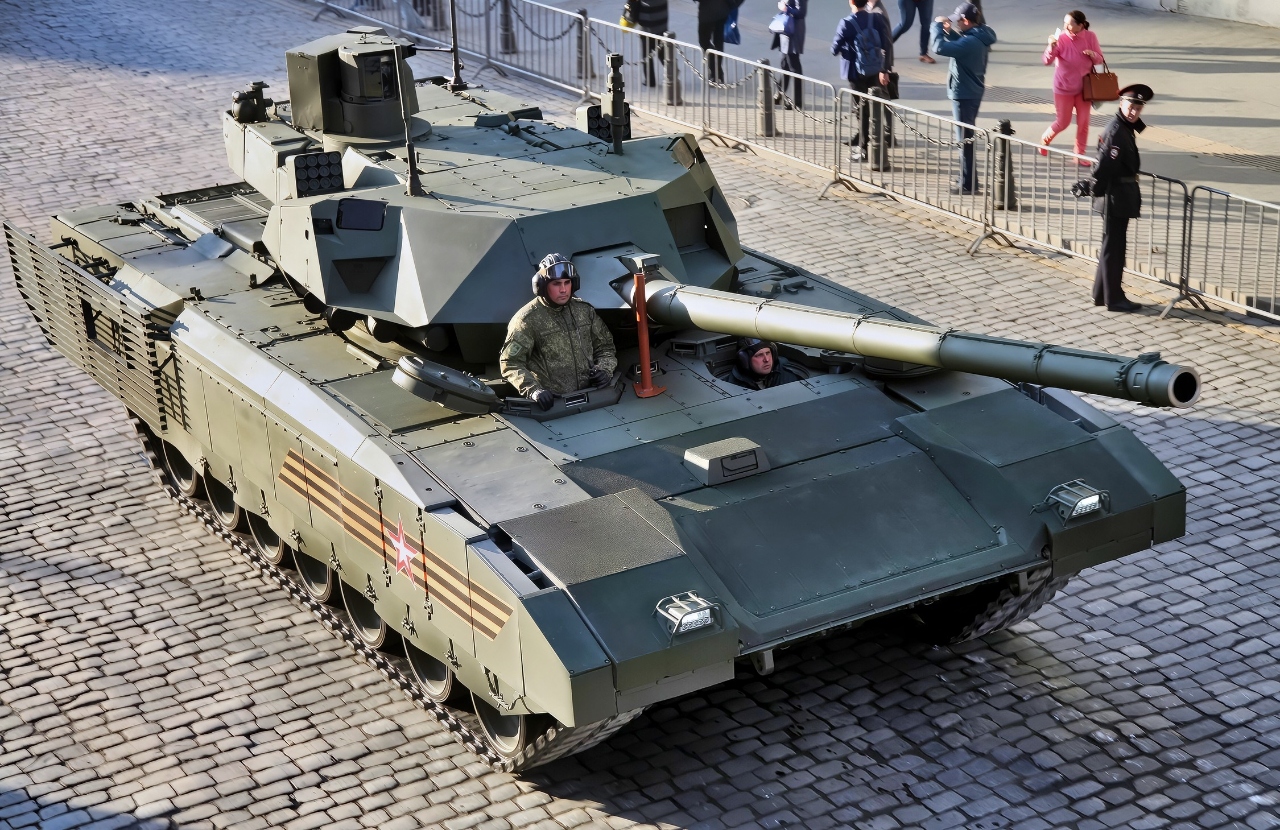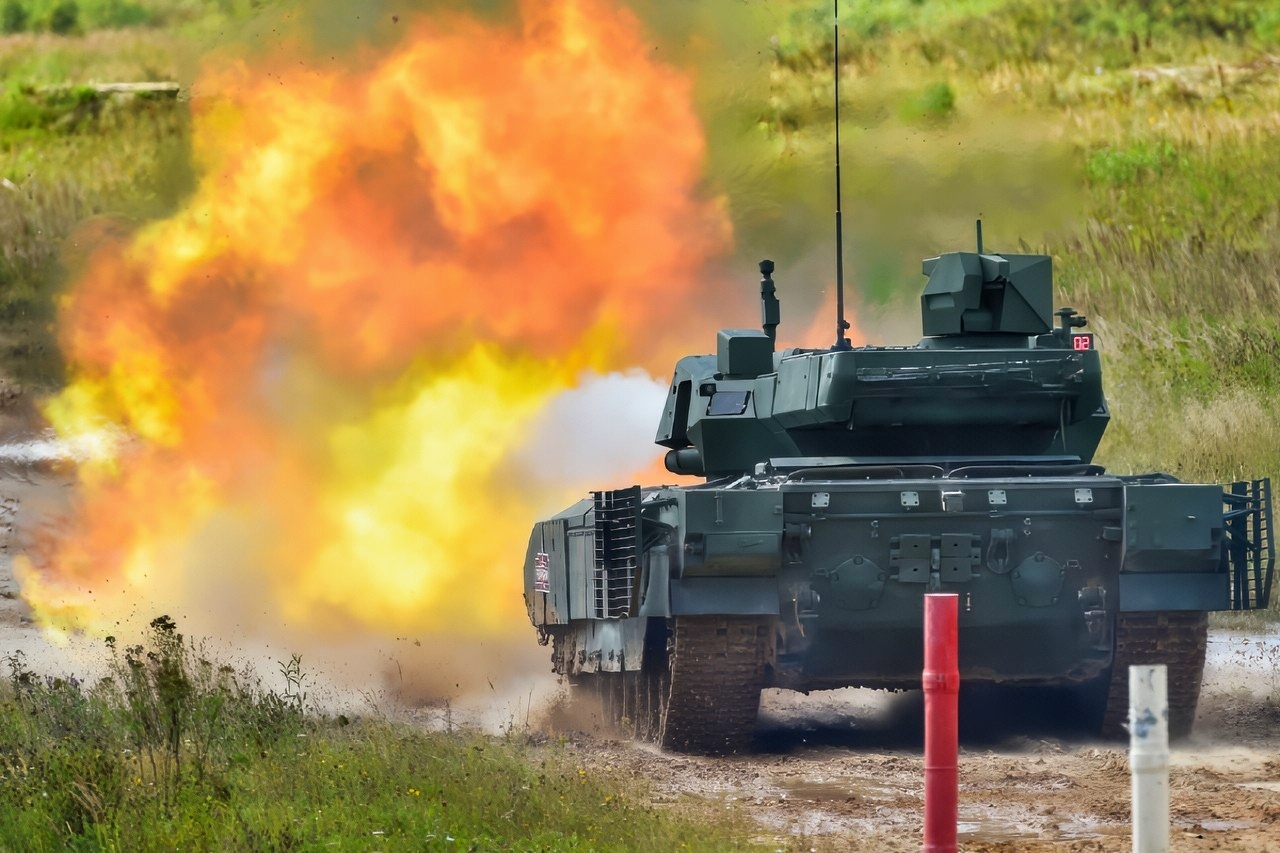The T-14 Armata: The Tank So Expensive Russia Is Afraid to Lose It
Key Points and Summary
-Russia’s T-14 Armata, once hyped as a world-beating “super tank,” has been conspicuously absent from the war in Ukraine.
-Despite its advanced design, including an unmanned turret and active protection systems, the program is a strategic failure.
-Plagued by minuscule production numbers, high costs, and technical problems, the Kremlin deems the T-14 “too valuable” to risk in combat.
-Russian commanders reportedly distrust the vehicle, and its limited deployment has been more for propaganda than actual effect, making the next-generation tank a hollow threat.
Russia’s T-14 Armata: Too Valuable to Use in Ukraine?
When Russia unveiled the T-14 Armata tank at Moscow’s 2015 Victory Day Parade, it was touted as the world’s most advanced main battle tank, featuring innovations that, on paper, placed it a generation ahead of Western rivals.
The T-14 features an uncrewed turret and a 125mm smoothbore main gun capable of firing both conventional ammunition and anti-tank guided missiles.
With active protection systems and advanced sensors, the West was expected to play catch-up. The reality diverged from Russian hype.
The T-14 Armata has mirrored Russia’s military: heavily promoted, plagued by issues, barely produced, and unused during years of brutal war.

T-14 Armata Tank Russia. Image Credit: Creative Commons.

T-14 Armata. Image Credit: Creative Commons.
Meet The T-14 Armata
Unlike prior Russian tanks designed for mass production, the T-14 Armata is technologically ambitious and, on paper, impressive.
The T-14 Armata’s primary weapon is a 125mm smoothbore gun in its unmanned turret, which is controlled electronically from a protected crew capsule compartment located in the center of the tank.
The autoloader feeds the main gun and allows it to fire both traditional rounds and the Sprinter Anti-Tank Guided Munition (ATGM). Autoloader issues have plagued Russian tanks, with rounds exploding if the turret is penetrated, endangering the crew.
Better, More Advanced Crew Protection:
The Armata, by contrast, emphasizes crew protection and advanced sensors in a Western-style approach, featuring an unmanned turret, active protection system (APS) to intercept projectiles, and digital battlefield networking.
A February 2015 Rossiyskaya Gazeta article by Sergey Ptichkin states that: “The forward (protected crew shell) has multilayered, combined armor protection that can withstand a direct hit from any type of round that exists today.”
Additional protection for the T-14 Armata comes in the form of an Afghanit Active Protection System (APS), which is designed to track incoming projectiles and use charges to detonate them before they hit the tank’s armor.
Production Has Been Minuscule
Because of high costs, production difficulties, and the war in Ukraine, Russia has prioritized upgrading older tanks over fielding the T-14. Significant Russian tank losses have not prompted widespread adoption of the T-14.
Only about 50 T-14s exist. Russia sent it to Syria for combat testing, but it underperformed and was withdrawn. Concerned about Western capture, Russia avoids deploying it to Ukraine.
This raises the core question: if the T-14 truly represents a next-generation technological leap, why are Russian commanders unwilling to employ it when traditional tactics and legacy tanks are failing, and heavy losses persist?

Main battle tank T-14 object 148 on heavy unified tracked platform Armata. Image Credit: Creative Commons.
The Armata tank is powered by an A-85-3A turbocharged diesel engine, generating approximately 1,200 horsepower. It has a top speed of 47 miles per hour.
However, the engine has encountered various issues, including overheating and excessive oil consumption, as well as difficulties in sourcing components due to sanctions.
Too Valuable To Lose In Ukraine
Last year, in April 2024, a senior Russian leader and a key Putin ally said that the T-14 Armata was “too valuable” to be used in the war in Ukraine.
Sergey Chemezov, the CEO of Rostec, Russia’s state-owned defense conglomerate, stated this in an interview with the Russian state-run news agency RIA Novosti.
“The Armata is somewhat expensive,” Chemezov said. “Functionally, it is much superior to existing tanks, but it is too valuable, so the army is unlikely to use it now. It’s easier for them to buy T-90s instead.”
He added, “Now we need money for new, possibly cheaper, tanks and weapons. If buying cheaper tanks is possible, why not?”
The Russian military reportedly deployed several T-14s for combat in July 2023 but soon withdrew them from the front.
The first batch of T-14 Armata tanks was reportedly rejected by Russian commanders due to poor condition, according to UK Defense Ministry officials.
Officials say the tank suffered delays and manufacturing problems. Deployment would likely serve propaganda, as commanders “are unlikely to trust the vehicle.”
If the Russian military shows little faith in the tank, it raises doubts about the tank’s quality and reliability. Although the Russians want to protect foreign sales and avoid images of burning T-14s in Ukraine, production numbers are so low—only about 50 have been built—that fielding them in combat is unlikely to change this impression.
Despite its advanced design, the limited production, distrust from commanders, and lack of meaningful combat deployment raise critical doubts about the T-14’s future. Its prospects for foreign sales seem limited, as its poor reputation and unproven battlefield record suggest that even Russia is not confident in its performance during intense conflict.
About the Author: Steve Balestrieri
Steve Balestrieri is a National Security Columnist. He served as a US Army Special Forces NCO and Warrant Officer. In addition to writing on defense, he covers the NFL for PatsFans.com and is a member of the Pro Football Writers of America (PFWA). His work was regularly featured in many military publications.
More Military
China’s Military Has 1 Goal: Beat America In a War
Confirmed: The U.S. Navy Still Loves the Aircraft Carrier
The F-22 Raptor Fighter Question No One Dares Ask











Zhduny
September 3, 2025 at 3:19 pm
T-14 armata is NOT a waste, it’s actually an advance on all the tanks designed during Soviet times.
But the west expects Russia to use it against Ukraine.
That’s shortsighted thinking. The armata is designed for fighting NATO, like charging through the border and driving into Helsinki.
The armata is not for plodding and slogging in the rasputitsa of eastern Ukraine.
The armata is equipped for a NBC war with NATO or ww3 with NATO.
Once the smoke clears, there’s only one survivor.